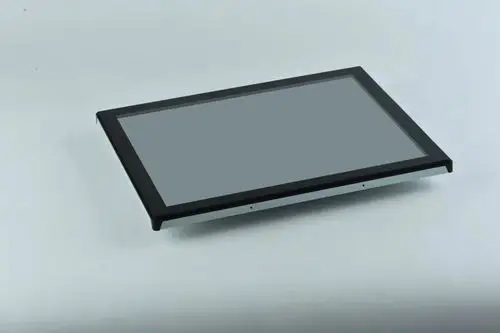The world at your fingertips: the principles, evolution and winning scenarios of touch screen technology
Анотація:
This article deeply analyzes the core technical principles of touch screen as an absolute coordinate system, analyzes the performance differences and application boundaries of the four mainstream technologies of resistive, capacitive, infrared and surface acoustic wave, and combines authoritative data with industry trends to provide the best optimization strategy for different scenarios. The drift challenge, environmental adaptability and interactive innovation of touch screens will become the key to future breakthroughs.

Today, when digital interaction is ubiquitous, fingertip touch has become the most natural bridge connecting people and machines. The core supporting this magic is the unique absolute coordinate system of the touch screen: each touch independently generates precise coordinate data, which is directly mapped to the screen position after calibration. This system ensures the high stability of the touch output at the same point (Basic principles of touch screen interaction). However, it is not perfect – the drift phenomenon caused by sampling differences makes the constant positioning of absolute coordinates the focus of continuous technology optimization.
1. Resistive: A solid and anti-interference industrial guard
Resistive screens rely on pressure contact between two layers of ITO film to achieve positioning. Its biggest advantage is that it is completely isolated from the environment: it is not afraid of dust, water vapor or oil pollution, and can even be operated with gloves or any hard objects. This makes it the first choice for harsh industrial environments such as factory workshops and medical equipment. However, the fragility of the plastic outer layer is its Achilles heel – sharp objects or strong pressure can easily cause permanent scratches, limiting its durability in open public places.
2. Capacitive: A sensitive and high-definition consumer favorite
Capacitive screens use human body current induction positioning to provide extraordinary resolution and transmittance, making smartphones and tablets a smooth experience. But its “delicate” nature cannot be ignored: when a conductor (such as a water droplet) approaches the screen to form a parasitic capacitance, or when the user wears insulating gloves, mis-touch and failure will follow (Analysis of the mis-touch mechanism of capacitive screens). Therefore, although it is popular in consumer electronics, it is difficult to gain a foothold in industrial scenarios where strong electric field interference exists or insulation operation is required.
3. Infrared type: anti-interference and durable environmental fighter
The infrared screen determines the touch point by detecting the on and off of infrared rays in the grid. Its features of not fearing current, voltage and electrostatic interference make it unique in workshops or outdoor scenes with complex electromagnetic environments. However, the physical limitations of infrared emitting tubes lead to low resolution, and ambient light (such as direct sunlight) easily interferes with sensing accuracy, so it is more suitable for scenes with low resolution requirements but changeable environments, such as self-service terminals or outdoor inquiry machines.
4. Surface acoustic wave: an interactive artist with precise pressure sensing
The acoustic wave screen locates by measuring ultrasonic attenuation, and its pure glass structure brings top light transmittance and scratch resistance. The biggest highlight is its unique Z-axis pressure sensing – it can recognize 256 levels of pressure, opening up a delicate interactive dimension for applications such as digital signatures and paintings (Acoustic Wave Screen Pressure Sensing Technology White Paper). However, dust and oil will block the path of the sound wave, and regular maintenance is required. It is best deployed in clean spaces such as art galleries and high-end shopping malls.
5. Scene Adaptation: Technical Characteristics Determine the Battlefield
- Four-wire Resistive Screen: Anti-fouling and Anti-interference, Fear of Scratching – Office, Fixed Industrial Control Console.
- Five-wire Resistive Screen: High Sensitivity and Long Life – Precision Instrument Control, Medical Equipment.
- Capacitive Screen: Fear of Drift and Needs Calibration – Consumer Electronics, Shopping Mall Guides (Avoid Industrial Control).
- Infrared Screen: Anti-interference and Harshness – Outdoor Terminals, Strong Electromagnetic Environments (Resolution is Not Critical).
- Acoustic Wave Screen: High-precision Pressure Sensing – Museums, Luxury Stores (Requires Regular Cleaning).
6. Touch of the Future: Evolution from Handwriting to Giant Screen
Innovation is breaking through traditional forms: Touch pen technology integrates pressure sensing and trajectory tracking to achieve natural writing like paper and pen in electronic signatures and educational whiteboards; Giant touch panel uses a pressure-sensitive capacitor layer, combined with a high-strength plastic surface, to enable large information walls and digital exhibition halls with millisecond-level response (Future Human-Computer Interaction Trend Report), making public information acquisition more immersive.
The сенсорний екран is by no means a stereotyped interactive plane – the toughness of resistors, the sensitivity of capacitors, the fortitude of infrared, and the precision of sound waves constitute a precise technical spectrum. Understanding the nature of drift, understanding the variables of the environment, and matching the accuracy of needs can light up the optimal coordinates in the map of the touch world. When future interactions continue to evolve towards pressure perception and super-large size, only by mastering the adaptation of the core technology can every touch become a precise key to the digital future.
